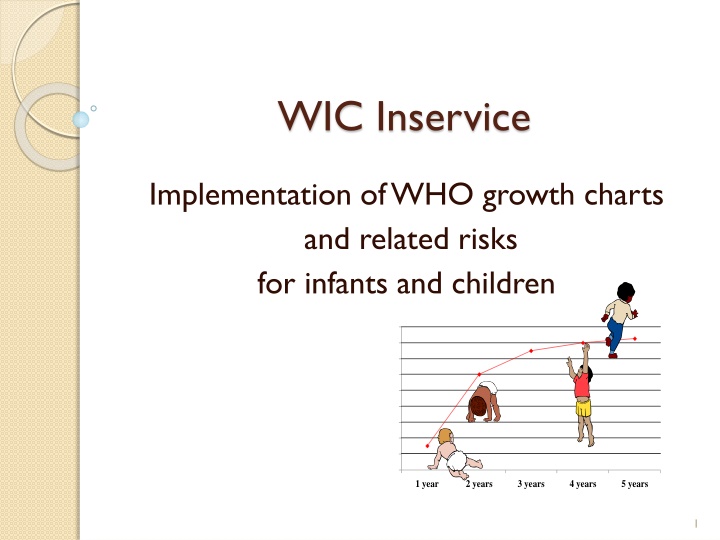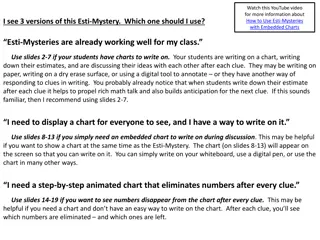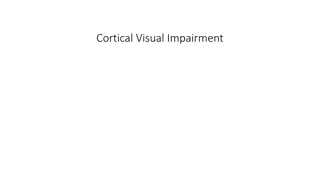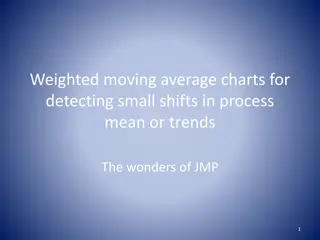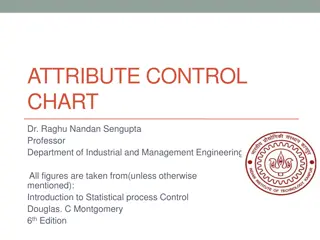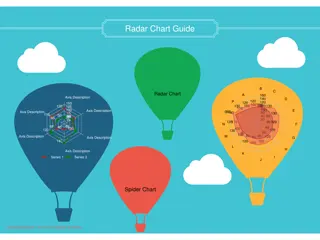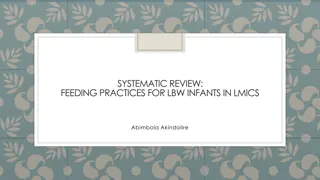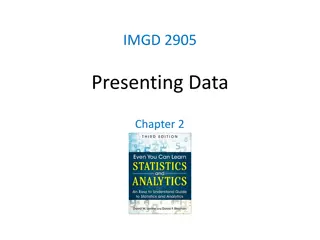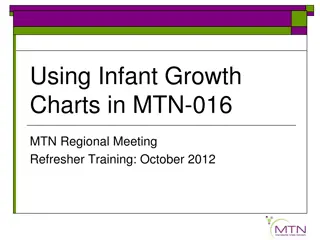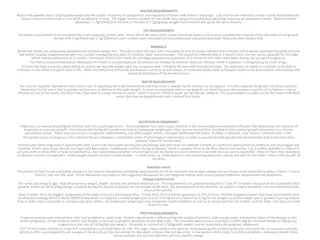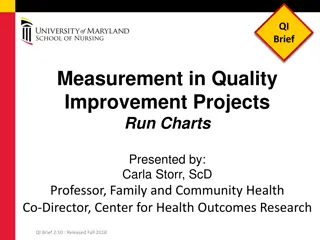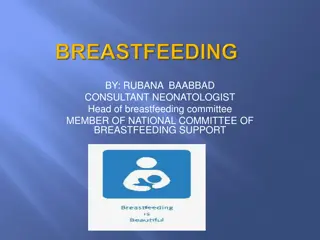Implementation of WHO Growth Charts for Infants and Children
Growth charts are essential for assessing children's growth, with WHO setting international standards since 2006. The discussion includes interpreting growth charts, the history of growth references, and the difference between reference and standard growth. It compares CDC's U.S. growth reference to WHO's global growth standard, focusing on optimal nutrition and care for children up to five years old.
Uploaded on Sep 19, 2024 | 4 Views
Download Presentation

Please find below an Image/Link to download the presentation.
The content on the website is provided AS IS for your information and personal use only. It may not be sold, licensed, or shared on other websites without obtaining consent from the author.If you encounter any issues during the download, it is possible that the publisher has removed the file from their server.
You are allowed to download the files provided on this website for personal or commercial use, subject to the condition that they are used lawfully. All files are the property of their respective owners.
The content on the website is provided AS IS for your information and personal use only. It may not be sold, licensed, or shared on other websites without obtaining consent from the author.
E N D
Presentation Transcript
WIC Inservice Implementation of WHO growth charts and related risks for infants and children 1 year 2 years 3 years 4 years 5 years 1
Background Growth charts are a key tool used to interpret growth measurements 2
Activity Discuss together: How do you use growth charts? When do you show growth charts to parents? How do you describe the graphs to parents? 3
History From 1977 to 2000, National Center for Health Statistics (NCHS) charts used worldwide as a growth reference Since 2000, Center for Disease Control (CDC) growth charts used as a growth reference for children age 0-20 years April 2006, World Health Organization (WHO) released a new international growth standard for children age 0-5 years 4
Reference vs. Standard A reference describes how children have grown in a particular time and place, gives a point of comparison, does not make a value judgment A standard describes how children should grow, regardless of time or place, defines what is normal or optimal, allows for value judgments 5
CDC Growth Reference Describes growth of children in the U.S. during the 1970s and 1980s Based on data from national surveys and birth certificates No special characteristics were required to be included in the data 6
WHO Growth Standard Frequent data collection from birth to two years of age Large number of observations completed internationally Feeding requirements included: Exclusive/predominant breastfeeding > 4 months Complementary feeding by 6 months Continued breastfeeding > 12 months 7
WHO Growth Standard Optimal Nutrition Breastfed with appropriate complementary feeding + Optimal Environment Clean, safe, smoke free + Optimal Care Access to immunizations and medical care = Optimal growth 8
WHO Growth Standard Hypothesis: Children throughout the world will grow similarly if exposed to optimal circumstances Data collected in: United States Brazil Norway India Oman Ghana 9
Growth patterns from birth to 24 months from the 6 WHO countries Brazil Ghana India Norway Oman USA 80 Mean of Length (cm) 70 60 50 0 200 400 600 Age 10
Recommendations for the U.S. American Academy of Pediatrics (AAP), National Institutes of Health (NIH) and CDC recommend national use of WHO charts from birth to 2 years and continued use of the CDC charts from 2 to 20 years USDA accepts recommendation for WIC 11
Oregon Implementation WHO charts added to TWIST in December 2011 TWIST will continue to select and plot the appropriate charts for age: WHO for children from birth to 2 years of age CDC BMI charts for children from 2 to 5 years CDC weight for length charts for children from 2 to 3 years if they cannot be measured standing up 12
Differences between Charts WHO growth standards measured healthy children under optimal conditions so more extreme cutoffs are appropriate for children measured on WHO graphs New cutoffs at the 2nd and 98th percentiles on WHO graphs Continue to use 5th and 95th percentiles on CDC growth charts for older children 13
Differences between Charts Fewer infants would be below 5th percentile on WHO weight-for-age charts Fewer children will be identified as underweight or Failure to Thrive (FTT) especially from 6 to 23 months More infants would be above 95th percentile on WHO weight-for-length Formula-fed infants tend to gain weight more rapidly after 3 months and could be identified as overweight. More infants would be below 5th percentile on WHO length-for- age charts 14
Comparison of WHO with CDC Weight-for-Age Percentiles for Boys 10 Weight (kg) CDC: Dotted lines WHO: Solid lines 0 0 1 2 3 4 5 6 Age in months 15
Case Study Compare the following growth charts for Sally What are the differences between the CDC and WHO charts? 16
Three weight measurements for Sally plotted on the current CDC chart Weight-for-age, Girls 0-12 mos, CDC reference 12 10 Example p5 p10 p25 p50 p75 p90 p95 Weight (kg) 8 6 4 2 0 2 4 6 8 10 12 Age in months 17
The same three weight measurements for Sally plotted on the new WHO charts Weight-for-age, Girls 0-12 mos, WHO reference 12 10 Example 5th 10th 25th 50th 75th 90th 95th Weight (kg) 8 6 4 2 0 2 4 6 8 10 12 Age in months 18
WIC Risk Changes based on the WHO Growth Charts TWIST will continue to auto assign risks based on information entered on the medical data screen 19
103 Underweight (Infants and Children) Underweight Birth to < 24 months New! 2nd percentile weight-for-length 2-5 years New! 5th percentile Body Mass Index (BMI)-for-age At Risk of Underweight Birth to < 24 months New!> 2nd percentile and 5th percentile weight-for- length 2-5 years New!>5th percentile and 10th percentile BMI-for-age 20
High Risk With WHO charts, fewer children will be assigned the underweight risk. When it is assigned, this indicates a significant issue with weight. New! TWIST will assign a high risk level to children with this underweight risk. These children will need to be referred to the WIC Nutritionist 21
113 Overweight (Children 2-5 Years of Age) 2-5 years: 95th percentile BMI or weight-for-stature Medium risk level New! Only standing height measurements may be used to assign this risk New! Risk title changed from Monitor Weight 22
114 At Risk of Overweight (Children 2- 5 years of age) 2 - 5 years: 85th and < 95th percentile BMI for age or weight-for-stature New! Only standing height measurements may be used to assign this risk Medium risk level 23
NEW RISK! 115 High Weight for Length (Infants and Children < 24 Months of Age) Birth to < 24 months: 98th percentile weight for length Medium risk level 24
121 Short Stature (Infants and Children) Short stature: Birth to < 24 months: New! <2nd percentile length/age 2-5 years: 5th percentile stature/ age At risk of short stature: Birth to < 24 months: New! > 2ndto 5th percentile length/ age 2-5 years: >5thto 10th percentile stature/age 25
NEW RISK (Not related to growth charts!) 344 Thyroid Disorders Health care provider s diagnosis of: Hyperthyroidism Hypothyroidism Congenital hyperthyroidism or hypothyroidism Postpartum thyroiditis Medium risk level 26
Activity Discuss together: What terms do you use when talking to parents about their children s weight? 27
Talking about weight Use language that continues to avoid obese and fat labels Consider use of supportive phrases such as monitor weight, watch weight gain, weight higher than average or weight above most children at that age etc. 28
Materials and Resources Summary of Risk Changes document Updated risk information sheets for the Nutrition Risk module Updated Policy 675, Risk Criteria: Codes and Descriptions World Health Organization website http://www.who.int/childgrowth/en/ Centers for Disease Control and Prevention website http://www.cdc.gov/growthcharts/who_charts.htm MMWR article September 10, 2010: Use of WHO and CDC Growth charts for Children aged 0 -59 months Pediatrics article; originally published online September 26, 2011: Parental Perceptions of Weight Terminology That Providers Use With Youth 29
Questions? Contact your nutrition consultant or Vernita Reyna RD vernita.d.reyna@state.or.us 30
